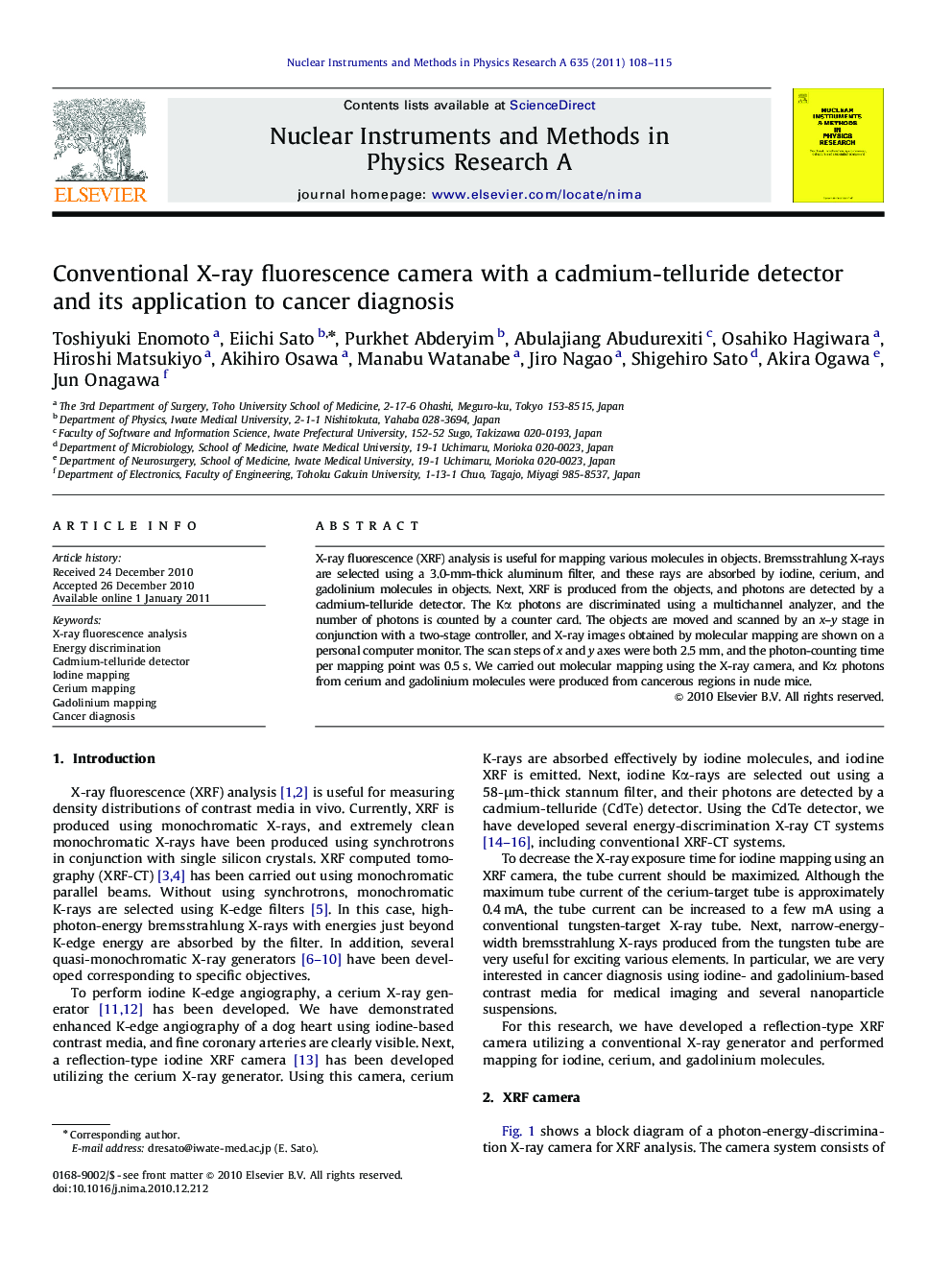| Article ID | Journal | Published Year | Pages | File Type |
|---|---|---|---|---|
| 1825453 | Nuclear Instruments and Methods in Physics Research Section A: Accelerators, Spectrometers, Detectors and Associated Equipment | 2011 | 8 Pages |
Abstract
X-ray fluorescence (XRF) analysis is useful for mapping various molecules in objects. Bremsstrahlung X-rays are selected using a 3.0-mm-thick aluminum filter, and these rays are absorbed by iodine, cerium, and gadolinium molecules in objects. Next, XRF is produced from the objects, and photons are detected by a cadmium-telluride detector. The Kα photons are discriminated using a multichannel analyzer, and the number of photons is counted by a counter card. The objects are moved and scanned by an x-y stage in conjunction with a two-stage controller, and X-ray images obtained by molecular mapping are shown on a personal computer monitor. The scan steps of x and y axes were both 2.5 mm, and the photon-counting time per mapping point was 0.5 s. We carried out molecular mapping using the X-ray camera, and Kα photons from cerium and gadolinium molecules were produced from cancerous regions in nude mice.
Related Topics
Physical Sciences and Engineering
Physics and Astronomy
Instrumentation
Authors
Toshiyuki Enomoto, Eiichi Sato, Purkhet Abderyim, Abulajiang Abudurexiti, Osahiko Hagiwara, Hiroshi Matsukiyo, Akihiro Osawa, Manabu Watanabe, Jiro Nagao, Shigehiro Sato, Akira Ogawa, Jun Onagawa,
